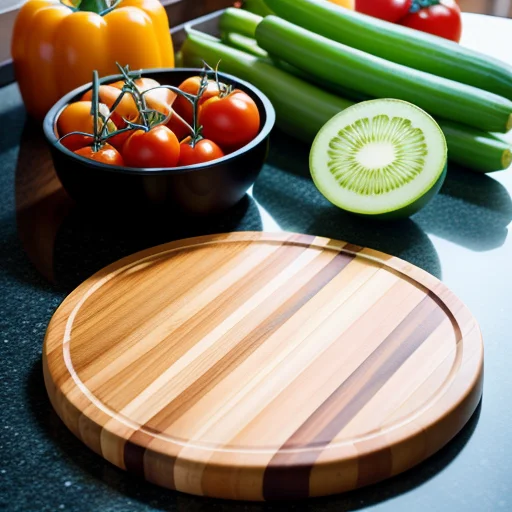As an Amazon Associate I earn from qualifying purchases.
Kitchen hygiene is crucial when preparing food to prevent contamination and foodborne illnesses. Many home cooks have concerns about the cleanliness and sanitation of wood cutting boards compared to plastic alternatives. Are wood cutting boards sanitary? However, with proper care and maintenance, wood boards can be just as sanitary, if not more so, than plastic.
A Brief History of Cutting Boards
Cutting boards have been used in home kitchens for centuries, evolving over time along with attitudes around sanitation and hygiene. Early cutting boards were thick wooden blocks used for chopping, slicing, and preparing foods. Wood was valued for its natural durability compared to other materials available at the time.
By the late 1800s, concerns arose about the cleanliness of wood surfaces. Newer materials like glass, marble, and eventually plastic gained popularity as easier to disinfect alternatives. Plastic cutting boards entered the consumer market in the 1950s and quickly became a staple item in many kitchens.
The emergence of plastic coincided with growing public awareness around food safety and sanitation. Plastic was marketed as the modern, hygienic choice while wood boards were viewed as outdated and prone to bacteria. For decades, the perception remained that plastic equaled clean. But does scientific evidence support this?
Are Wood Cutting Boards Sanitary Common Beliefs
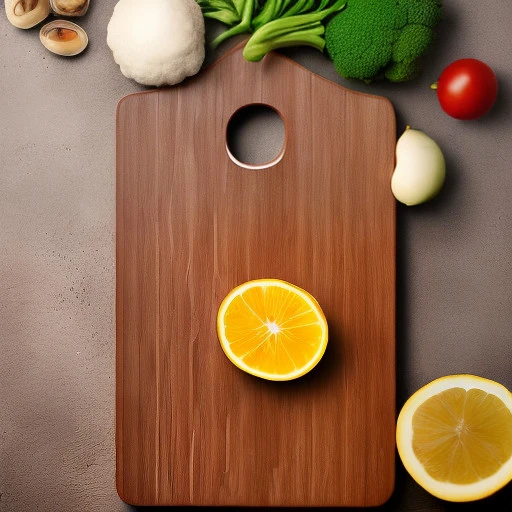
Wood boards are often viewed as being more prone to harboring bacteria. The porous nature of wood makes it seem like an ideal breeding ground for germs. In contrast, plastic boards are perceived as nonporous and easier to disinfect in the dishwasher. As such, many believe plastic boards are inherently more sanitary.
However, the complex cellular structure of wood also makes it difficult for bacteria to penetrate deeply and survive. Hardwoods like maple contain natural antibacterial compounds that limit microbial growth. And contrary to appearances, plastic is not impervious. Over time, plastic boards develop micro-grooves from knife cuts that can harbor bacteria.
So while plastic seems like the cleaner choice at first glance, the reality is more nuanced. Proper cleaning and sanitization habits play a larger role in cutting board hygiene than the material itself.
Research Findings on Bacteria
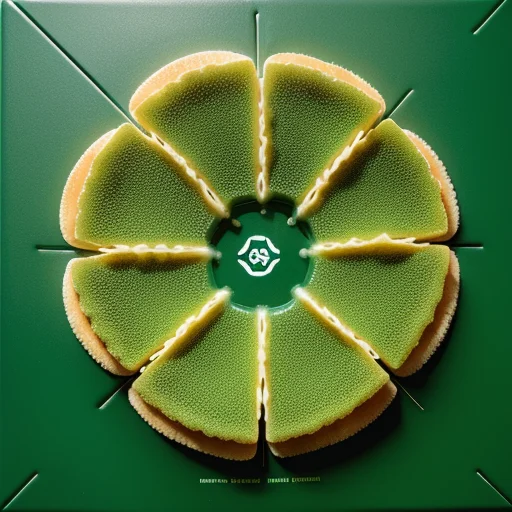
To compare bacteria levels, Dean Cliver, a food safety researcher at UC Davis, conducted an influential study in 1994. Cliver contaminated wood and plastic cutting boards with raw meat, then cleaned and analyzed bacteria levels. Surprisingly, the wood boards had significantly less bacterial contamination after washing than the plastic boards.
According to food safety expert Ben Chapman, wood’s properties make it inhospitable for bacteria in several ways:
- Hardwoods like maple and beech release natural compounds that kill microbes.
- When washed and left to dry, wood cutting boards rapidly dehydrate. This drying process further destroys any lingering bacteria.
- The rough surface texture makes it difficult for bacteria to adhere and develop into biofilms.
- Frequent oiling creates an antibacterial surface coating.
So while bacteria may temporarily reside on the wood’s surface, they fail to penetrate or thrive long term.
Comparatively, plastic boards develop permanent scarred micro-grooves over time that provide ideal niches for bacteria to hide and multiply, even after washing. Hot water and detergents alone often fail to fully dislodge bacteria from these plastic nooks.
Cleaning Challenges
Plastic boards with extensive scars and cuts pose greater cleaning challenges compared to wood. Bacteria can persist in damaged plastic surfaces despite typical washing methods. This gives the illusion that plastic is inherently more sanitary, when really the pre-existing grooves are to blame.
In contrast, wood’s porous nature allows thorough surface cleaning. Abrasives can scrub away debris from the entire board with ease. And as mentioned, wood’s rapid dehydration destroys leftover bacteria during the drying process.
Bleach solutions are another effective way to sanitize both plastic and wood boards. According to Chapman, “Bleach will kill bacteria equally well on plastic and wooden surfaces as long as the solution can access the surface.”
The key is proper manual cleaning before sanitizing. Soap and hot water washes away debris so the bleach can penetrate. Wood’s porosity allows better access for deep cleaning and bleach disinfection.
Proper Cleaning and Sanitization
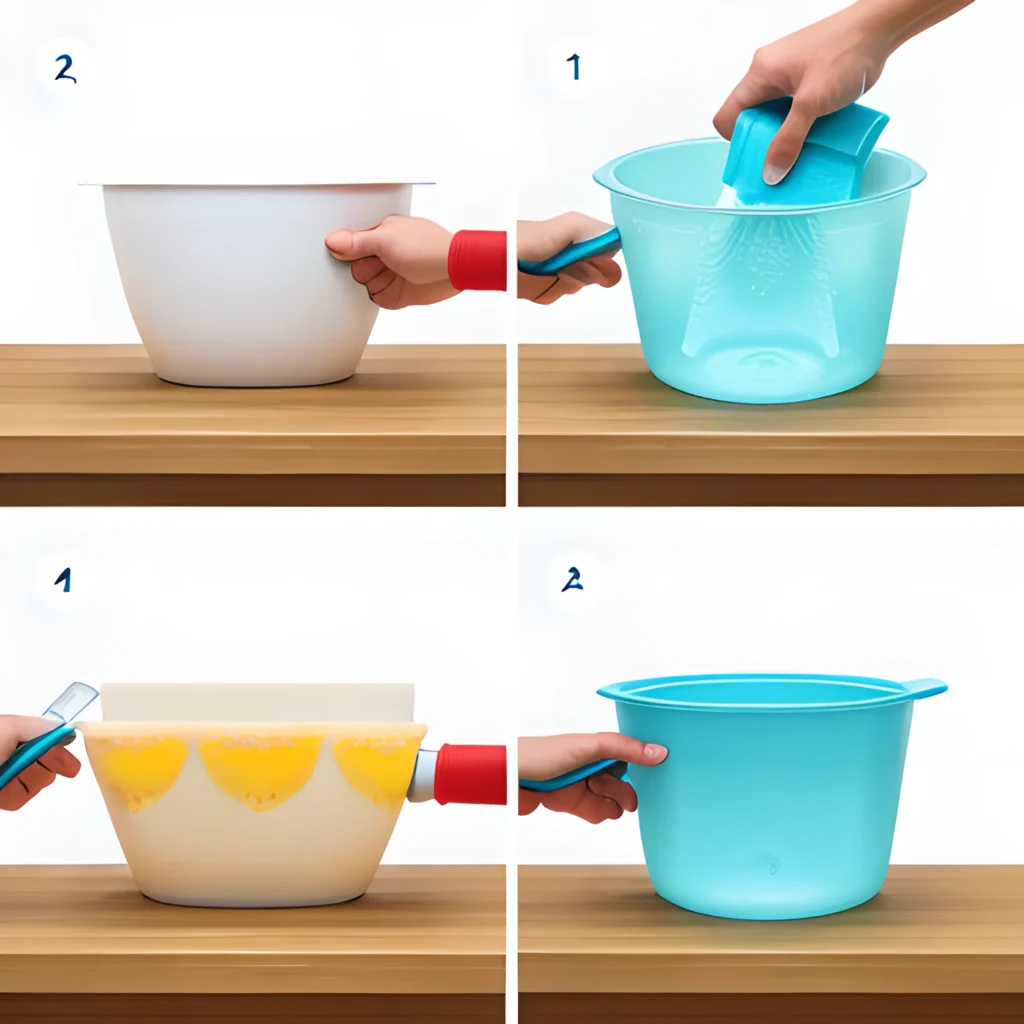
To safely sanitize both plastic and wood boards, the USDA recommends these cleaning steps:
- Wash with hot soapy water after each use. For wood boards, use a scrub brush to thoroughly clean the porous surface.
- Apply a sanitizing bleach solution (1 tablespoon unscented bleach per gallon of water) and let sit 1 minute.
- Rinse thoroughly with hot water. Allow boards to air dry or quickly pat dry with clean paper towels.
This bleach disinfection process is highly effective when done properly. It kills up to 99.999% of all foodborne disease-causing germs on contact for both plastic and wood materials.
According to the USDA, only bleach and other EPA-approved disinfectants reliably kill dangerous pathogens like E. coli, Salmonella, and norovirus often associated with cutting boards. Soap alone is not enough for full disinfection.
Ongoing Cutting Board Maintenance
Like any kitchen item, cutting boards are subject to wear and tear over time. The USDA advises replacing any board – wood or plastic – that becomes excessively worn or develops hard-to-clean cuts and grooves. Here are some signs a cutting board has reached the end of its lifespan:
Plastic Boards
- Deep knife scars and grooves where food can accumulate
- Cloudy, scratched appearance even after extensive cleaning
- Brittle edges or other signs of damage
- Staining that cannot be removed
Wood Boards
- Large cracks, deep cuts, or excessive knife marks
- Warping or curved surface that prevents stability
- Dry, flaky appearance from lack of oiling
- Mold growth if left wet for prolonged periods
To extend their usable lifespan, wood boards should be regularly treated with food-grade mineral oil to prevent drying out. Eco-friendly plant oils like walnut oil are another option. Avoid vegetable oils which can go rancid.
Ideally, oiling a wood board once a month helps maintain its integrity. Let the oil fully absorb, then wipe away any excess. Proper oiling ensures wood boards remain sanitary and warp-free for years of use.
Additional Cutting Board Options
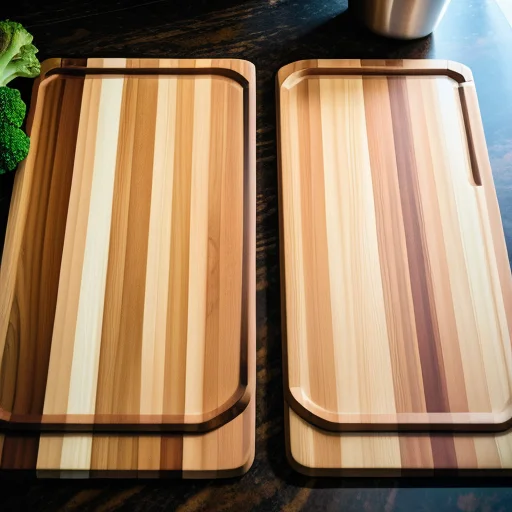
While wood and plastic are common, some alternative cutting board materials also provide smooth, nonporous prep surfaces:
Silicone: Heat-resistant silicone boards are growing in popularity. Their nonporous surface resists stains, odors and bacteria. The textured grip on the bottom makes them unique – they stick to the counter while in use, preventing slippage. Easy to clean and disinfect. Avoid sharp knives which can slice into silicone.
Glass: Glass boards provide an ultra-smooth, nonporous surface that’s easy to disinfect. However, they dull knife edges quickly. Tempered glass boards can shatter if dropped. Avoid freezing glass boards; rapid temperature changes can cause cracks.
Stone: Durable natural stone like granite, marble, and slate can be used as cutting boards, but materials vary. Granite resists knife marks while softer marble is prone to scratching. Can be washed similarly to plastic but avoid harsh cleaners that damage the surface. Relatively heavy.
Bamboo: Despite the name, bamboo cutting boards are actually made from dried, compressed grass stalks. Bamboo has some natural antibacterial qualities but can split over time. Avoid soaking bamboo boards in water. Lightly coat with food-grade mineral oil to prevent drying out.
General Food Safety Tips
Proper hygiene and food handling practices are also key to prevent illness, regardless of cutting board material used:
- Hand washing – Wash hands for 20 seconds with soap before and after food preparation, after touching raw meat, eggs, or poultry, and before eating.
- Prevent cross-contamination – Use separate boards and knives for raw foods (meat, poultry) and ready-to-eat items (veggies, fruit) to avoid cross-contamination. Consider color coding boards.
- Wash produce – Rinse fresh fruits and vegetables under running water before use, including those with rinds and skins that won’t be eaten. This removes unseen dirt and microbes. Use a clean scrub brush on firm produce like melons. Pat dry with clean towels.
- Proper temperature control – Refrigerate perishable foods promptly. Cold temperatures slow bacteria growth. Discard old leftovers after 3-4 days. Reheat cooked foods to 165°F. Use a food thermometer to verify temperatures. Transport and store food in insulated coolers or bags.
- When in doubt, throw it out! – Discard food that smells strange or rotten. Don’t taste food that looks or smells questionable. Remember the mantra, “If in doubt, throw it out!”
Cutting Boards Around the World
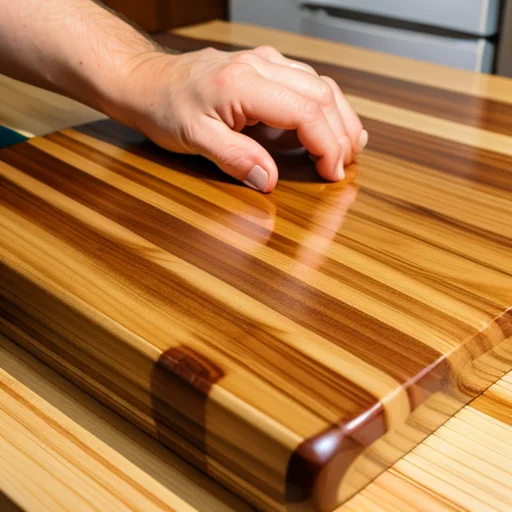
Cutting boards reflect not only kitchen culture, but regional climate, environmental factors, aesthetics, and tastes:
- Japan – Cypress wood boards called manaita are traditional. Valued for aromatic cypress scent and natural antibacterial properties. Soft wood helps preserve delicate Japanese knives.
- Mexico – Molcajetes, carved volcanic stone mortar and pestles, are iconic. Used for grinding spices and prepping salsas. Seasoned over time.
- Middle East – Large wood chopping blocks often built into countertops. Multipurpose for chopping meat, breads, and vegetables. Hardy woods like acacia and olive wood commonly used.
- India – Natural riverstone slabs used as paat/patthar ka taawe for rolling out dough, crushing spices. Naturally cooling properties valued in hot climate. Stones sourced regionally.
- Italy – Classic pasta boards handcrafted from domestically sourced hardwoods like maple or walnut. Often family heirlooms passed down generations. Both form and function.
- Scandinavia – Teak boards popular for durability and water resistance. Teak’s natural oils prevent absorbance of food odors, flavors. Reclaimed teak common for sustainability.
- Africa – Sheesham wood indigenous to Africa valued for varied grain patterns. Natural sheen when polished. Also used as decorative serving platters.
Conclusion
The answer of “are wood cutting boards sanitary” is with proper cleaning, sanitization, and care, wood cutting boards can be just as safe as plastic alternatives. While no surface is completely impervious to bacteria, wood’s natural antimicrobial properties make it unlikely to harbor more microbes compared to scored plastic boards. Following food safety best practices is key, regardless of the Cutting Board material used.
Replace boards regularly when they become excessively worn or hard to clean. For wood boards, occasional oiling helps maintain the natural antibacterial qualities in the wood’s surface. Also bamboo cutting boards can be a good option. Other than that well-cared for wooden cutting boards can provide a lifetime of safe and sanitary use for home cooks.
The right cutting board depends on the type of food prep being done. For raw meats, plastic is best. For breads and delicate tasks, wood excels. hygiene. Consider color coding separate boards for produce, raw meat, and ready-to-eat dishes to avoid cross-contamination.
With a bit of proper care and cleaning, both wood and plastic Cutting Boards can safely uphold kitchen hygiene for years to come.
As an Amazon Associate I earn from qualifying purchases.

